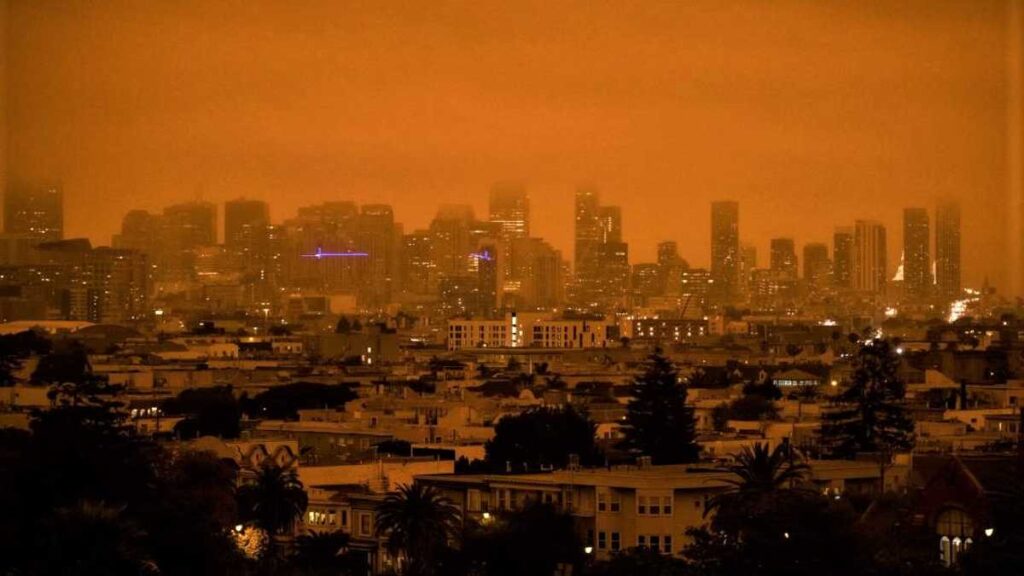Air Quality America New York State Health Department advises New Yorkers to exercise caution as unhealthy air quality continues to affect much of the state

Air Quality New York State Health Department advises New Yorkers to exercise caution as unhealthy air quality continues to affect much of the state
Source: New York City Community Air Survey and New York She Department of Environmental Conservation Data shows heavy concentrations of PM2,5 particles, measured in micrograms per cubic meter, for seven NYOs. The location, as of 11 p.m. Wednesday, records reflect the Environmental Protection Agency’s highest PM25 center from 1999 to 2023 for a given city.

The air in New York City on Wednesday wasn’t bad by city standards. This was historically bad, even compared to places around the world that typically have a lot of air pollution.
The chart above shows the concentration of a particularly dangerous type of air pollution, as measured by the state Department of Environmental Protection’s network of sensors around the city.
Those sensors measured levels of particles 2.5 microns in diameter, or smaller, brought by the wind from wildfires in Canada. Wednesday’s daily average was the highest since records began in New York in 1999. (The second highest level was on Tuesday.) Wednesday’s pollution level was also higher than the worst daily average on record in San Francisco—on November 16, 2018. That’s when wildfires were blazing in Northern California—and it reached above-average pollution levels recorded in Portland, Ore., on Sept. 13, 2020, when pollution from nearby wildfires was at its worst.
Small particles measured by the sensor – about 30th each
As wide as a human hair – are dangerous to human health because
They are small enough to enter the lungs and bloodstream. The Environmental Protection Agency closely tracks this type of pollution from smokestacks and vehicles.
Thirty-five micrograms of particles per cubic meter of air is considered a safe average level in the air for a day, according to the agency. Wednesday’s average level at seven stations in the city was 377, almost 11 times above that limit.
Wednesday’s pollution, of course, was not caused by a power plant or vehicles, but by wildfires in Canada, mostly in Quebec.
Fires of this magnitude are unusual in the eastern part of North America, said Eric James, a research associate at the University of Colorado who works on models used by the National Oceanic and Atmospheric Administration to predict the movement of smoke from wildfires. does. The east coast receives more rainfall in summer than the western half of the continent, where wildfires are so common that they have one season. An unusual weather pattern pushing pollution down the coast is also a culprit, he said.
How long the wind will remain dangerous depends on what happens to the fire, the weather in Canada, and the wind. Mr James said weather forecasters trying to forecast air quality struggle to forecast with greater accuracy beyond a 48-hour period. Their models rely on satellite measurements of wildfire magnitude, but do not predict whether the fires will get better or worse over time, from a general pattern of being slightly stronger during the hot part of the day and slightly weaker at night. beyond.
Predicting the wind that will carry the smoke around is also a challenge, especially during summer. The wind is more predictable during the winter. But summer winds often generate thunderstorms that are small, localized, and usually short-lived. But despite that long-term uncertainty, air quality in New York is likely to remain hazardous for several days.
and the Atmospheric Administration to forecast the movement of smoke from wildfires. The east coast receives more rainfall in summer than the western half of the continent, where wildfires are so common that they have one season. An unusual weather pattern pushing pollution down the coast is also a culprit, he said.









